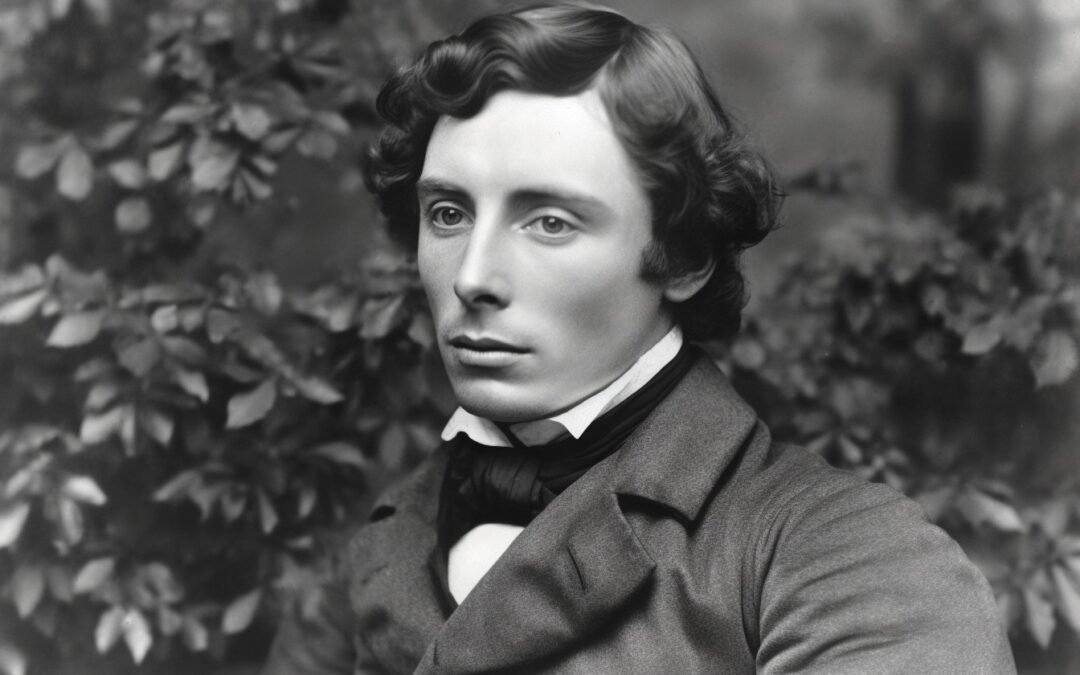John Keats: An Exploration of a Poetic Legend
John Keats, a name synonymous with rich and evocative poetry, left an indelible mark on the literary world despite his brief life. His works are a masterclass in vivid imagery and intricate language, encapsulating a unique blend of beauty and mortality that continues to captivate readers and scholars alike.
Keats was born in 1795 in London. His life, though short, was filled with a fervent dedication to poetry. Unlike many of his contemporaries, Keats did not come from a wealthy or influential family. His father died when he was just eight, and his mother passed away six years later. These early losses shaped his view of the world, and their impact is evident in the somber tones that pervade much of his work.
The Craft of Keats
Keats’s poetry is characterized by its lush descriptions and an almost tangible sense of place and atmosphere. He had an extraordinary ability to make the reader feel as though they were part of the scene he described, whether it was a Grecian urn or an autumn day. His use of language was precise yet imaginative, allowing him to paint pictures with words in a way that few poets can match.
His famous odes, such as “Ode to a Nightingale” and “Ode on a Grecian Urn,” are perfect examples of his craftsmanship. These poems delve into themes of beauty, transience, and the interplay between art and reality. Keats’s fascination with classical mythology and the romantic ideals of his time are evident in these works, where he blends historical and mythical references with personal reflection.
Love and Loss in Keats’s Work
Keats’s exploration of love is profound and multifaceted. His poetry often grapples with the intense and sometimes painful aspects of love. This can be seen in his sonnet “Bright Star,” where the longing for eternal love is evident. Keats’s treatment of love is deeply introspective, allowing readers to see the tender and vulnerable side of human affection. His works could easily be part of any collection of the best love poetry books, standing alongside the most heartfelt expressions of romantic sentiment.
His relationship with Fanny Brawne, to whom he was engaged, provided a significant source of inspiration for his love poetry. The letters he wrote to her are filled with passion and a poignant awareness of his own mortality, adding a layer of melancholy to his expressions of devotion. These letters reveal the depth of his feelings and the sense of urgency that his failing health imparted to his romantic yearnings.
Keats and the Human Condition
Keats’s work often delves into the human condition, exploring themes of mortality and the fleeting nature of happiness. His famous poem “To Autumn” reflects a serene acceptance of the natural cycle of life and death. The imagery of the ripening fruit and the approaching winter serves as a metaphor for the inevitable decline that follows the peak of vitality.
His meditation on mortality is particularly poignant given his own life was cut short by tuberculosis at the age of 25. This ever-present awareness of death infused his work with a sense of urgency and poignancy. Keats’s reflections on life and death continue to resonate with readers, making his poetry a touchstone for those grappling with their own existential concerns. His ability to articulate these feelings in a relatable and moving way ensures his place among the greats of literary history.
Keats’s Influence and Legacy
Keats’s influence on subsequent generations of poets and writers cannot be overstated. His innovative use of language and form, combined with his exploration of universal themes, paved the way for later poets to experiment with new styles and ideas. Modern poets often draw inspiration from Keats’s ability to capture the essence of human experience in such a vivid and compelling manner. His legacy lives on in the work of contemporary poets who seek to emulate his mastery of language and depth of insight.
His work also has a place in the broader context of literary studies, where it is frequently examined alongside other great poets of his era. For those studying contemporary poetry, Keats remains a critical point of reference, offering lessons in both technical skill and thematic depth.
In the realm of sad poetry books, Keats’s work stands out for its ability to convey profound sorrow with elegance and beauty. His exploration of melancholy is not merely a descent into despair but rather a nuanced examination of the complexities of the human heart. This balance of beauty and sadness is a hallmark of his style, and it continues to resonate with readers today.
Keats’s Enduring Appeal
The appeal of John Keats’s poetry lies in its timeless exploration of themes that are universal to the human experience. Love, beauty, mortality, and the search for meaning are all central to his work. His ability to express these themes with clarity and depth has ensured that his poetry remains relevant and beloved by readers of all ages.
Keats’s work is also notable for its accessibility. While his language is rich and his references often erudite, the emotional core of his poetry is immediately understandable. This combination of intellectual and emotional appeal has helped to secure his place in the literary canon. His poems continue to be studied, enjoyed, and celebrated for their artistry and insight.
For those looking to explore Keats’s work, his poetry offers a wealth of material to delve into. Whether one is interested in rhyming love poems or the more introspective reflections on life and death, Keats provides a rich tapestry of verse that continues to captivate and inspire.




